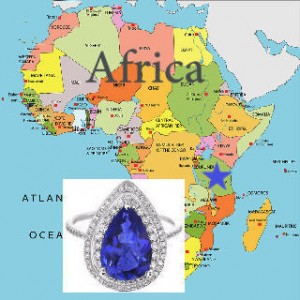The purpose of this post is to add to the information we provided on March 17, 2012 about gemstone hardness and cleaning methods. Below are a few more tips and additional information about gemstone and jewelry cleaning.

Tanzanite is susceptable to thermal shock, therefore, avoid rapid changes in temperature such as occurs during steam cleaning (image: Tanzanite ring from MyJewelrySource.com)
Tanzanite is susceptable to thermal shock, therefore, avoid rapid changes in temperature such as occurs during steam cleaning (image: Tanzanite ring from MyJewelrySource.com)
When a gemstone is subjected to a rapid temperature change it is referred to as thermal shock. Thermal shock can actually crack stones like tanzanite and peridot so don’t use hot water when cleaning them. Other gems that can be damaged from hot cleaning solutions include opal, lapis lazuli and turquoise. Thermal shock is one reason to avoid having your jewerly steam cleaned at your local jewelers especially if your jewelry contains any of the gemstones metioned above.
Organic gems like amber, pearls and coral, can be damaged by lotions, perfumes and especially ammonia, so that’s why you probably have been told to put your pearls on after you are completely finished getting yourself ready in the morning. Although most gems stand up much better to chemicals, it is best to remove jewelry when using cleaners or solvents and it is not recommended that jewelry be cleaned with them.
Chlorine can attack gold alloys and acids can etch gemstones so it is best to remove your jewelry before enjoying your pool.
Ultrasonic and steam cleaners can do a great job at cleaning jewelry but they have many drawbacks and we do not recommend them. Ultrasonic cleaners can loosen stones from their settings and damage porous stones like lapis or turquoise. Because most emeralds are oiled, they should never ever be placed in an ultrasonic cleaner because this will cause the oil to leak out of the stone and severely damage the gem’s appearance. This is also true of any fracture filled gemstones. Additionally, the vibrations caused by ultrasonic cleaners may loosen the stones in the settings, expecially rings with the pave setting of many small stones.
In summary, it’s best to avoid having your jewelry cleaned with an ultrasonic or steam cleaner altogether (even if you are offered a free cleaning by your local jeweler). We clean all of our jewelry at MyJewelrySource with a soft-bristled tooth brush or a cloth using plain luke warm or slightly soapy water or gentle jewelry cleaner.





